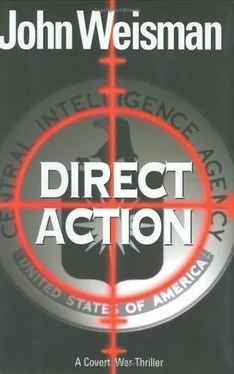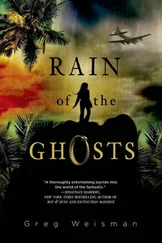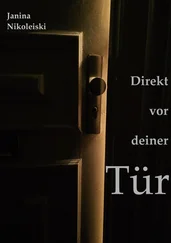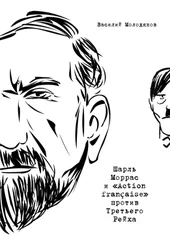What drew McGee’s attention to him was that he was out of position for a security officer. The guy was perched three stories high on a construction scaffolding perhaps a hundred and fifty, two hundred yards down the road, just past the intersection, scanning the U.S. convoy through a pair of binoculars. He held a cell phone in his left hand. McGee focused on him. It was a flip phone and it was open. But the guy in olive drab wasn’t holding the phone to his ear: his arm was dangling at his side.
The son of a bitch is looking straight at me, McGee thought.
And then, never moving the binoculars, the man lifted the cell and used his thumb to press the control buttons. It was hard to do with one hand, but he never stopped looking through the field glasses, looking straight into McGee’s brain.
That was when McGee understood what was happening.
Oh Mother of God, oh Christ, oh holy shit . “Jam it, Sass-go left-go left-go left!” McGee dropped the binoculars and lunged for the wheel, fighting to get his leg over the console so he could stomp Sass’s foot and put pedal to metal.
Then suddenly his existence turned dreamlike and McGee realized that somehow he’d slipped into a parallel universe where everything happened in slow motion. And no matter how hard he tried, McGee just couldn’t…make…things…move…fast…enough.
Sass twisted his head in McGee’s direction, mouth wide, a primal scream building in his throat.
McGee never heard him. The Suburban was already disintegrating around the three of them. The worried, confused, childlike expression on the Texan’s round face was the last thing McGee saw before the big silver FAV exploded in a huge orange fireball.
16 OCTOBER 2003
8:21 A . M .
38442 COPPERMINE ROAD
MARILYN JEAN O’CONNOR,Marymount College class of 1994, knew she’d worked at the Central Intelligence Agency for precisely seven years, two months, and eleven days because she was an unusually punctilious record keeper. A GS-9, MJ, as she called herself when she wasn’t at work, was a midgrade analyst in the ten-person Counterterrorist Photo Interpretation Group, which was acronymed C-PIG. She and her fellow C-PIGgies spent their days rooting for intelligence truffles in a windowless office facing an interior corridor on the fourth floor of an anonymous, ugly, toad-green glass box of an office building that sat six hundred yards east of Route 28 and 1.3 miles south of the Dulles Toll Road’s Exit 10.
Sometimes, as she came and went, MJ felt a little bit like a character out of the movie Three Days of the Condor . Actually, she felt like a character out of the novel Six Days of the Condor, because being a thorough sort of person, after she’d rented the movie on DVD, she’d gone out and found a copy of that seminally existential work of 1970s espionage fiction. She much preferred the book to the truncated, slick filmic adaptation.
The building in which she worked was, just like the covert CIA office in Condor, not identified as a government installation. On the maps at headquarters and in CIA phone books, the place was called Building 213 West, although it was more popularly referred to as Coppermine. What civilians saw as they drove past was a six-story opaque glass-and-steel structure that bore a (bogus) corporate logo that looked little different from the logos of the scores of dot-com slash telecom slash info-com companies that inhabited Northern Virginia’s Tyson’s-to-Dulles corridor.
It was, so the security types at CIA pronounced, a perfect work of camouflage. A few wags from the DO would from time to time mention that the pneumatic Pentagon-grade traffic barrier at the gate, the triple row of Jersey barriers, and the twenty-four-hour shifts of armed guards toting submachine guns in the parking lot might raise an eyebrow or two. But then, given the public’s wide acceptance of the Patriot Act and the fact that Capitol Hill tours now included a drive-by of the five Army Patriot missile batteries ringing the complex, perhaps not.
Anyway, just like Ronald Malcolm, Condor ’s central character, MJ couldn’t tell a soul what she actually did for a living.
And just like Malcolm/Condor, MJ had no idea why CIA considered what she did so highly, highly classified. Sensitive? Sure. But MJ’s new boss, a covertly retired Very Senior Operative who’d been rehired at CIA in the months following 9/11 as the counterterrorist analysis coordinator, had actually insisted that the members of the C-PIG conduct themselves as if they were stationed on foreign soil. “Hostile territory” were the exact words she used.
Which is why when MJ was on the job, she and her colleagues called one another by pseudonyms. Mark Olshaker, the good-looking, tall, prematurely gray guy in the cubicle across the way, was known as Julian C. WEATHERALL. She called him Mr. Julian. MJ’s pseudonym was Hester P. SUTCLIFFE, and Mark called her Miss Hester. It had taken MJ and her coworkers almost three weeks to get used to their new identities. During the transition, which MJ decided early on was a bureaucratic fusion of sublimely ridiculous and painfully agonizing, they were all ordered by their new supervisor to attach convention cocktail party “My Name Is” peel-and-stick labels bearing the preposterous pseudonyms on their lapels.
Said boss-lady was a petit, autocratic, blue-haired woman in her early seventies who brooked no back talk and wore ivory silk and navy-blue wool no matter what the season. Her peel-and-stick label read
MYNAMEIS
PORTIAM. ST. JOHN
ST. JOHNIS PRONOUNCED SIN -GIN
“My actual name,” she’d said at her first meeting with the newly formed C-PIG and the six other working groups over which she had control, “is need-to-know, and you lot do not have the need.” She would be called, she said, Portia M. ST. JOHN, or more simply as Mrs. ST. JOHN. She then enunciated “ Sin -Gin” twice.
Mrs. ST. JOHN’s obsession with secrecy was, she insisted at that same meeting, a matter of life and death. The country was now at war and all the rules had changed. She knew war, she said, because she’d been a teenager during World War II and had come of age in the CIA as a secretary to several chiefs of station during the height of the Cold War. She had, she said, watched as one after another of nation’s secrets hemorrhaged through carelessness, neglect, and treason.
Loose lips sink ships, and there would be no bobbing life rafts on her watch. Corridor gossip was henceforth forbidden. There would be no job talk outside the building at any of Herndon’s myriad bars and restaurants. The on-site pseudonyms, she reiterated, had been instituted in case the offices were bugged. That way, the staff’s real names would remain unknown to the thousands of hostiles intent on stealing America’s crown jewels.
Despite the warnings-not to mention the security posters that Mrs. ST. JOHN hung in all the corridors, Marilyn Jean O’Connor often wondered about the need for such analog-generation tradecraft as office pseudonyms. After all, the building’s exterior windows were all triple-paned glass with white sound running between the outside two panes, and the secure communications system, the classified computer network, and the unclass telephones were checked daily by technicians from one of the CIA Division of Security’s offices. If truth be told, the in-place TECHSEC 7at C-PIG and the other counterterrorist-related offices that did business from the toad-green glass box on Coppermine Road was newer and far more thorough than what was available at some of the older clandestine CIA satellite buildings that fanned out across a vast swath of Northern Virginia. Only at Coppermine, however, was the personnel’s security bar placed so high.
Читать дальше












